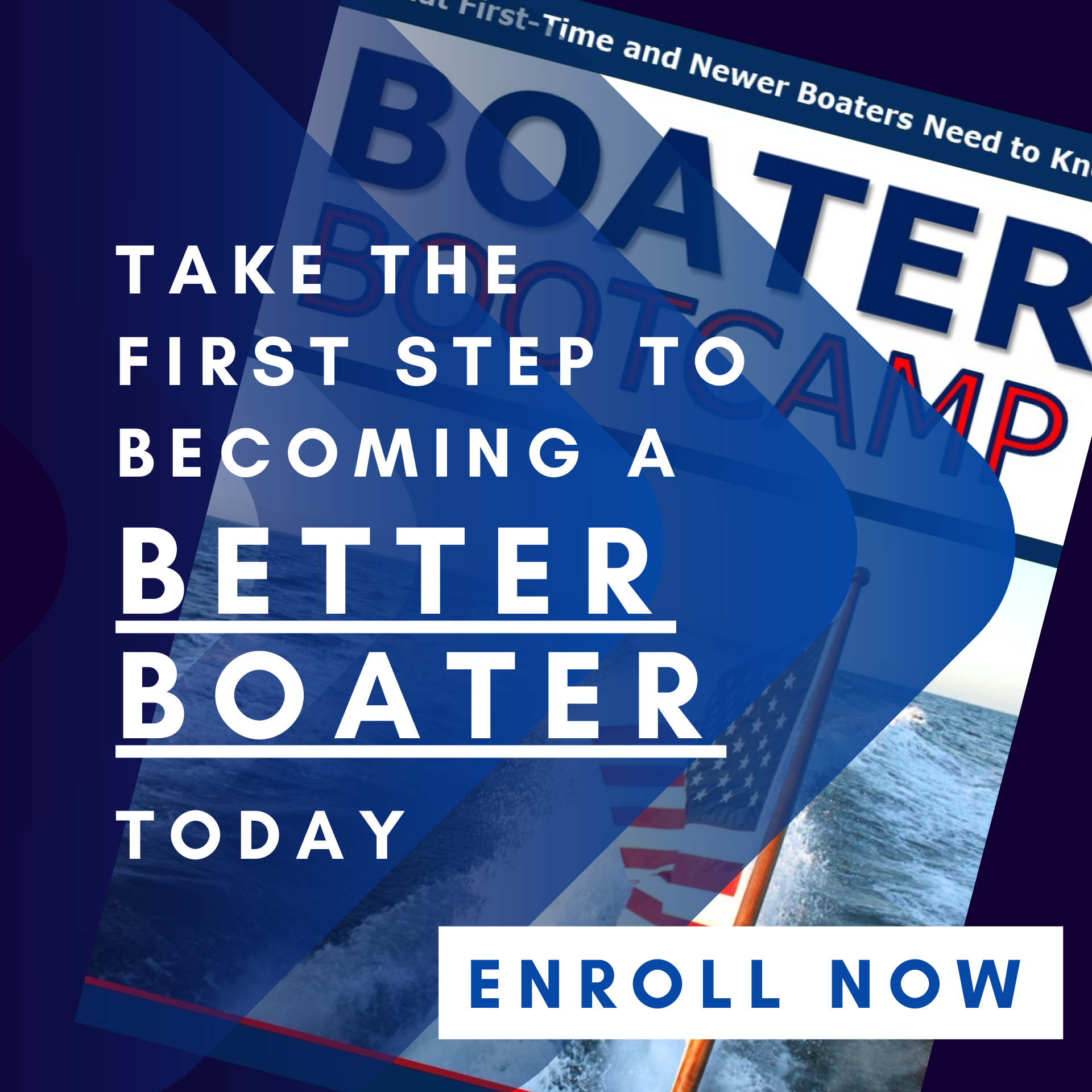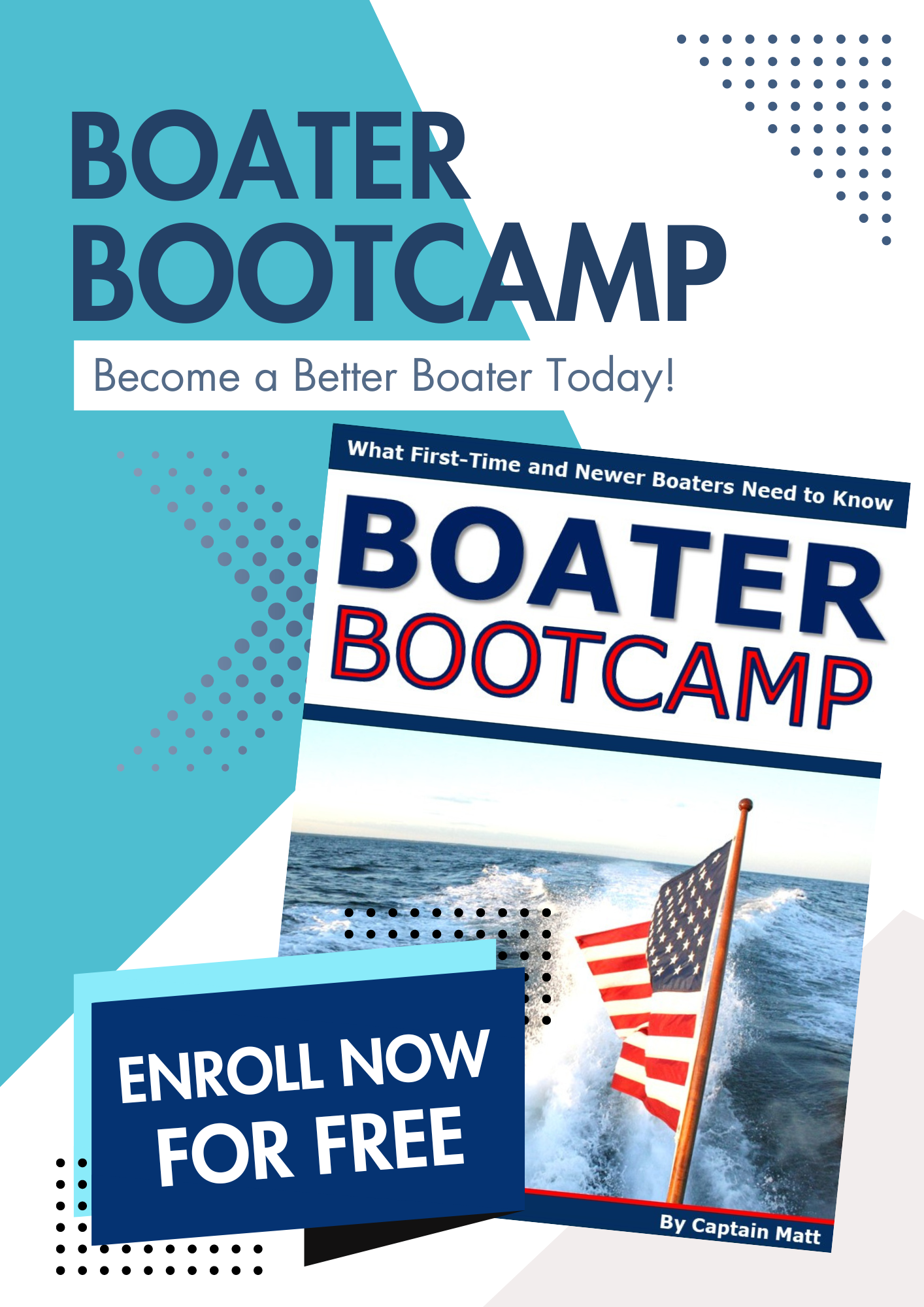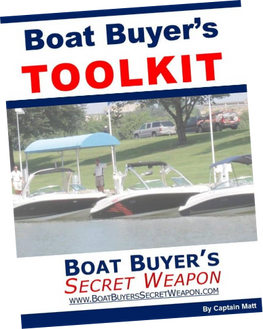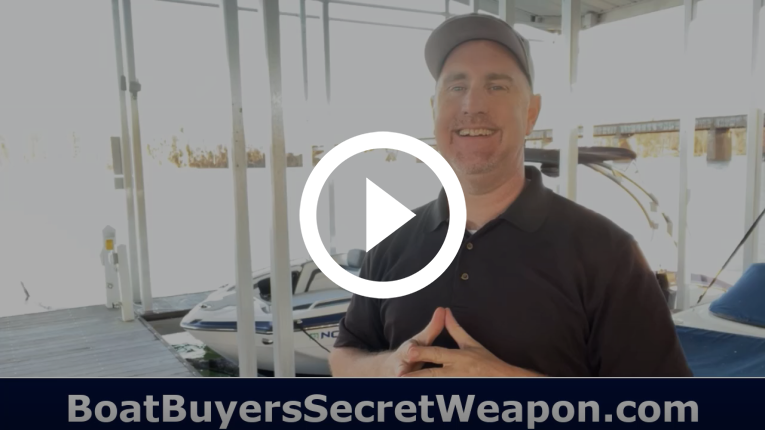When researching pontoon and tri-toon boats, safety is an important consideration. Have run hundreds of boats and pontoons over the past 40+ years, I’ll share all you want and need to know.
Before making the leap in shopping pontoons for sale or renting one, you may wonder if a pontoon or tri-toon is a safe boat.
Pontoons and tritoons are very safe boats on lakes, rivers, bays and even in the ocean a mile or 2 out on calm days. With either two or three toons, they are buoyant, stable and handle rough conditions (up to 2-foot waves) very well.
Although pontoons are very safe when run in the proper conditions, I’d recommend taking a safe boater course or doing some boat handling training to understand the basics. (More on that later).

Even with the safe boater course, there are a few situations as a pontoon captain that you’ll want to be aware of before jumping aboard and heading out for the day, including one major mistake to avoid at all costs.
Overloading You Pontoon Can Lead to a Bad Day on the Water
 Although pontoons and tri-toons are great for loading up your friends and family, there is a limit to the weight they can support. Each pontoon boat is different, so look for the yellow and black safety placard that will be on every boat in the US (Canada has a similar placard).
Although pontoons and tri-toons are great for loading up your friends and family, there is a limit to the weight they can support. Each pontoon boat is different, so look for the yellow and black safety placard that will be on every boat in the US (Canada has a similar placard).
This placard will give you the number of people and weight which can be on the pontoon safely. And, to avoid a ticket, the limit is whichever comes first.
So a 24’ pontoon may have a rating for 14 people and a weight of 1,400LBS. If you have an adult and 13 kids, you are at maximum capacity.
Conversely, if you have 7 adults that weigh 200 LBS each you will be at the legal limit as well.
Being over-weight will sink the pontoon deeper in the water making it harder to maneuver and more likely to take waves over the deck.
Pontoon Boats in the Open Ocean is Something to Avoid if Not Highly Experienced
Many people use pontoons in saltwater and it can be a great option to boat in bays, inlets, ICW and even a mile or two offshore.
Going further than that, I’d leave only to experience captains that are keeping an eye on the weather. Pontoons and Tritoons will handle 2’ chop fairly easily but getting 3’ and over are outside a pontoons capabilities.
Being off-shore where the weather can pick up quickly and wind and rain is not a place I’d want to be in a pontoon or tritoon. If going offshore is a major part of your boating life, center consoles, cruisers and larger dual consoles are a better fit.
Double Decker Pontoons Offer Another Risk to Be Aware Of
Although not applicable to all pontoons, those with a 2n deck require extra common sense. Overloading the top deck will cause the boat to get tippy and they will flip over or capsize.
It happens a few times every year. As a matter of fact, many manufacturers have stopped building them due to the liability. Keep the weight down on the top deck and you’ll have a great time.
The Most Important Thing In This Article…
NEVER SIT ON THE BOW WITH FEET DRAGGING IN THE WATER
Capt. Matt
It may see like a lot of fun to sit on the bow of the pontoon and drag your feet in the water. The water splashing up, the wind in your face and the feeling of freedom.
DO NOT SIT ON THE BOW OF A PONTOON!
The problem with this move is it only takes a small wake or a toe catching the water for the person to be pulled in the water (even at slow speeds).
And, once you’re in the water, the only place you have to go is right towards the prop. A fast spinning knife with 3 or 4 blades. And, that’s after hitting your head several times on the pontoon.
The people that sit upfront likely have not considered this fate, but it is real and not worth it.
Use a little common sense, sit inside the fencing and you’ll have a great time.
If you’re concerned about safety, here are a few more things you may not have considered.
PONTOON CAPTAIN’S DRIVING TIPS:

Keep the bow up in choppy water.
When encountering big wave, inexperienced pontoon captains often pull back the throttle. This move drops the bow into the wave and almost always results in water coming over the bow.
Not only will this get everything wet, it can damage your fence rail and cause other damage to your boat.
Watch 360 degrees around you while underway.
Unlike the highways and bi-ways, there is not specific traffic pattern on the water. Boats can and will come from any direction at any speed and make a change in course at any time.
Being aware of your surroundings and assuming the other boaters will do something unexpected will keep you and your boating friends safe.
Start by keeping a mental map of all the boats on the water, including speed, direction and if they are doing water sports. (tubers tend to weave, skiers will stop and turn on a dime to pick up a down skier, etc).
And, never under any circumstance follow directly behind a boat towing someone doing water sports. If they fall, you may not see them or even have time for a defensive maneuver. Get outside their wake, usually there is plenty water to avoid this situation.
When pulling a tuber or skier, keep at least 100’ away from a dock, shore or anchored boat
When pulling a tuber or skier, its important to remember, they don’t have total control of where they are going. When turning, they will swing wide and can easily hit an object causing serious harm.
Not only is it the law in most areas, staying 100’ or more off any object will ensure you avoid any accidents.
Do not drink in excess when operating a pontoon or tritoon
It’s fun to have a few cold ones while on the water boating. Remember, to keep your head and stay sober. In many states in the US, you can receive a DUI while on a boat.
And, according the US Coaster Guard, the leading cause of boating fatalities are alcohol related.
Have life jackets on or easily accessible
The other major cause of fatalities is not wearing a life-jacket. Having enough life jackets (PFD’s) on board makes you legal but having them easily accessible will keep you safer.
PONTOON DOCKING TIPS:
 Never go faster than you are willing to hit the dock
Never go faster than you are willing to hit the dock
Maintain heading in gear then shift out of gear to control speed. A constant in gear and out of gear process spending a majority of the time in neutral (out of gear)
Maintain heading in gear then shift out of gear to control speed. A constant in gear and out of gear process spending a majority of the time in neutral (out of gear)
Maintain heading in gear then shift out of gear to control speed. A constant in gear and out of gear process spending a majority of the time in neutral (out of gear)
Aluminum and fiberglass can be easily fixed but a broker arm or leg is a little more valuable.
Pontoon Trailer Tips:
 When putting on the trailer, keep speed under control and pay attention to the wind. (if windy, put bimini top down if equipped)
When putting on the trailer, keep speed under control and pay attention to the wind. (if windy, put bimini top down if equipped)
Winch the front of pontoon tight to the bow stops, then attach safety chain
Once off the ramp and cleared so the next person can use the ramp, put transom tie down straps on tight and ensure boat is sitting properly on the trailer.
Pontoon Boater’s Safety Course:
In addition to a potential savings on insurance, a boater’s safety course may be required in your state. It will make you a better and safer boater as well.
But, nothing will make you a better boat handler than spending time operating your boat.
My recommendation to new boaters and new pontoon boaters specifically is to take the boat out will your 1st mate for 4 or 5 hours.
Learn how your boat handles. How it maneuvers in close quarters. How much trim to use (adjusting the angle of the engine if equipped). How it turns and handles rough water.
You can discover more in our “Be the Best Boat Driver on Your Waterway” course that’s available for a special discount specifically for visitors to this website.
















